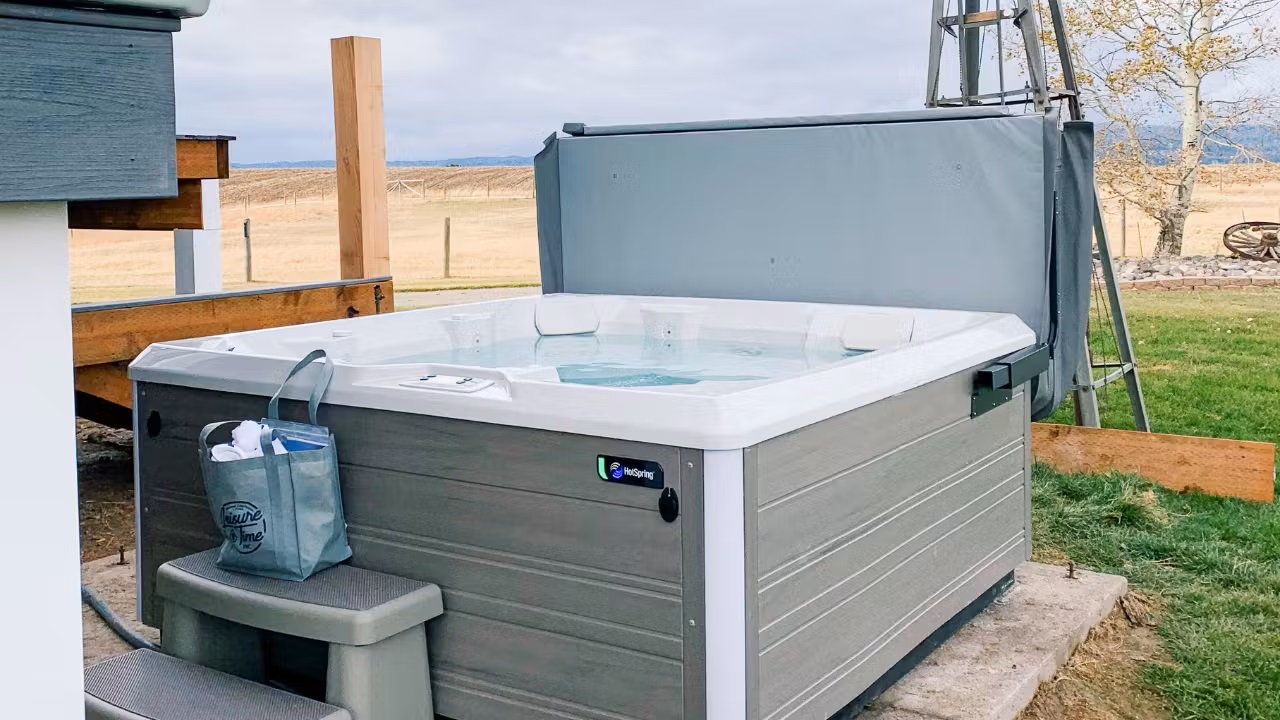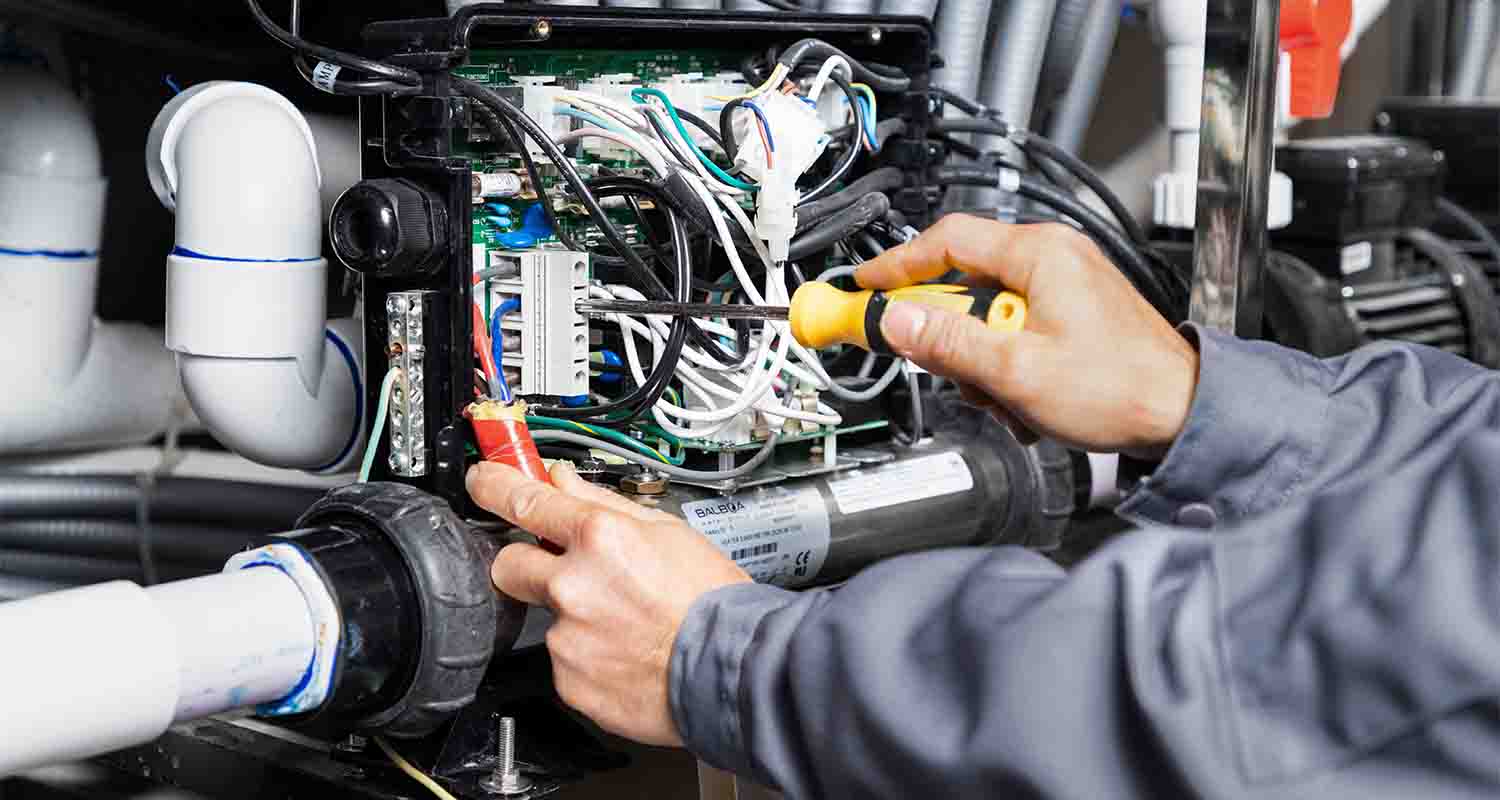Home>Gardening & Outdoor>Pool & Spa Care>How To Cool A Hot Tub


Pool & Spa Care
How To Cool A Hot Tub
Modified: October 21, 2024
Learn effective pool and spa care tips to cool down your hot tub quickly and efficiently. Discover expert advice on maintaining the perfect temperature for a refreshing and relaxing experience.
(Many of the links in this article redirect to a specific reviewed product. Your purchase of these products through affiliate links helps to generate commission for Storables.com, at no extra cost. Learn more)
**
Introduction
**
So, you've been looking forward to a relaxing soak in your hot tub, only to find that the water is too warm for comfort. Don't worry; this is a common issue that many hot tub owners face, especially during the scorching summer months. Fortunately, there are several effective ways to cool down your hot tub and get it ready for a refreshing dip.
In this article, we'll explore various methods for lowering the temperature of your hot tub, ranging from natural techniques to the use of innovative technology. Whether you prefer eco-friendly approaches or high-tech solutions, you'll find practical tips to suit your preferences.
Understanding the factors that influence hot tub temperature and the impact of excessive heat on water quality is crucial for maintaining a safe and enjoyable soaking experience. By gaining insights into these aspects, you'll be better equipped to make informed decisions when it comes to cooling down your hot tub.
So, let's dive in and discover the best ways to achieve the perfect hot tub temperature for a blissful and rejuvenating soak!
Key Takeaways:
- Keep your hot tub at the perfect temperature for a relaxing soak by adjusting the thermostat, adding cold water, and utilizing shade and nighttime cooling. Balance comfort and water quality for an enjoyable experience.
- Embrace natural methods like shading, ventilation, and evaporative cooling, or opt for advanced technology such as chiller systems and smart temperature control to cool your hot tub efficiently and sustainably. Enjoy a personalized and eco-friendly soaking experience.
Read more: How To Keep Hot Tub Hot In Winter
Understanding Hot Tub Temperature
Before delving into the methods for cooling down a hot tub, it’s essential to understand the factors that influence its temperature. Hot tubs are typically designed to maintain water temperatures within a specific range, often between 100°F and 104°F (37.8°C to 40°C). However, various elements can cause the water to exceed this ideal range, making it uncomfortably hot for soaking.
External factors, such as ambient temperature and sun exposure, play a significant role in heating up a hot tub. During the summer, intense sunlight can raise the water temperature, especially if the hot tub is not adequately shaded. Additionally, the insulation of the hot tub and the efficiency of its cover can impact how effectively it retains heat.
Furthermore, the frequency of hot tub use and the duration of each session can contribute to rising water temperatures. Continuous circulation and heating systems, if not adjusted properly, may lead to overheating. It’s important to be mindful of these aspects to prevent the water from becoming excessively hot.
Moreover, understanding the implications of high hot tub temperatures is crucial. Beyond discomfort, excessively warm water can affect water chemistry and sanitation. High temperatures can accelerate the depletion of sanitizer levels, potentially leading to inadequate disinfection and the growth of algae and bacteria. Therefore, maintaining the appropriate hot tub temperature is not only essential for comfort but also for water quality and safety.
By gaining insights into these factors, hot tub owners can make informed decisions when implementing cooling strategies. Whether it’s adjusting settings, utilizing natural cooling methods, or leveraging advanced technology, the goal is to achieve an optimal and enjoyable hot tub temperature while ensuring water safety and hygiene.
Tips for Cooling Down a Hot Tub
When faced with a hot tub that’s uncomfortably warm, there are several effective tips and techniques for bringing down the water temperature to a more refreshing level. Whether you prefer a hands-on, DIY approach or the convenience of advanced cooling systems, these tips cater to a diverse range of preferences and needs.
- Adjust the Thermostat: If your hot tub is equipped with a thermostat or temperature control settings, adjusting the settings to a lower temperature is the most straightforward way to cool down the water. Many modern hot tubs feature user-friendly interfaces that allow precise temperature regulation, enabling you to achieve the perfect balance of warmth and comfort.
- Remove the Cover: On sunny days, removing the hot tub cover for a period can facilitate natural cooling. By allowing heat to dissipate, especially during cooler morning or evening hours, you can effectively lower the water temperature. However, remember to replace the cover when the hot tub is not in use to prevent heat loss.
- Add Cold Water: For a quick and simple cooling method, adding cold water to the hot tub is an effective approach. Using a garden hose or a bucket, gradually introduce cold water while monitoring the temperature until the desired level is reached. This method is ideal for immediate temperature reduction before enjoying a relaxing soak.
- Utilize Shade: If your hot tub is exposed to direct sunlight, creating shade using umbrellas, canopies, or strategically positioned outdoor structures can prevent excessive heating. By minimizing sun exposure, especially during peak daylight hours, you can help maintain a cooler water temperature.
- Nighttime Cooling: Taking advantage of cooler nighttime temperatures is another natural cooling strategy. By leaving the hot tub uncovered during the night, when temperatures are lower, the water can naturally cool down. However, ensure that this approach aligns with safety precautions and local regulations.
These practical tips provide hot tub owners with versatile options for managing water temperature, catering to different preferences and environmental conditions. Whether it’s making simple adjustments, leveraging natural elements, or incorporating innovative cooling solutions, achieving the perfect hot tub temperature is within reach.
To cool a hot tub, add cold water from a garden hose or use ice packs. You can also run the jets to help circulate and cool the water faster.
Using Natural Methods to Cool a Hot Tub
Embracing natural methods to cool down a hot tub not only promotes eco-friendly practices but also offers sustainable and cost-effective solutions. By harnessing the power of nature, hot tub owners can effectively lower water temperatures while minimizing energy consumption and environmental impact.
Here are some natural methods to cool a hot tub:
- Shading and Ventilation: Creating shade around the hot tub area using trees, pergolas, or outdoor umbrellas can help reduce direct sunlight exposure, thereby preventing excessive heating. Additionally, ensuring proper ventilation around the hot tub can facilitate heat dissipation, especially during warmer weather.
- Cooling Plants and Landscaping: Incorporating vegetation and landscaping features around the hot tub can contribute to natural cooling. Planting trees and shrubs strategically to provide shade and enhance airflow can help maintain lower water temperatures. Moreover, the evaporation from nearby plants can have a cooling effect on the hot tub surroundings.
- Evaporative Cooling: Utilizing the principle of evaporative cooling, hot tub owners can place wet towels or cloths on the hot tub cover or around the tub. As the water evaporates from the fabric, it draws heat from the surface, effectively cooling the area. This simple yet efficient method can aid in lowering the water temperature naturally.
- Nighttime Cooling: Taking advantage of cooler nighttime temperatures is a natural cooling strategy. By leaving the hot tub uncovered during the night, when temperatures are lower, the water can naturally cool down. However, ensure that this approach aligns with safety precautions and local regulations.
These natural cooling methods offer hot tub enthusiasts sustainable and environmentally conscious approaches to managing water temperature. By integrating these techniques into hot tub maintenance routines, owners can enjoy a comfortable and eco-friendly soaking experience while minimizing the reliance on energy-intensive cooling systems.
Using Technology to Cool a Hot Tub
Advancements in hot tub technology have introduced innovative solutions for cooling the water, providing convenience and efficiency for hot tub owners seeking precise temperature control. From smart cooling systems to energy-efficient features, these technological enhancements offer a seamless way to manage hot tub temperature while optimizing energy consumption.
Here are some technological methods for cooling a hot tub:
- Chiller Systems: Integrated chiller systems are designed to actively lower the temperature of hot tub water, offering precise cooling capabilities. These systems work similarly to air conditioning units, utilizing refrigeration technology to extract heat from the water and maintain the desired temperature. Chiller systems provide a reliable and automated approach to cooling, ensuring consistent comfort for hot tub users.
- Smart Temperature Control: Modern hot tubs often come equipped with smart temperature control features, allowing users to remotely adjust the water temperature using smartphone apps or digital interfaces. This convenient functionality enables precise temperature management, making it effortless to cool down the hot tub before each use, regardless of the outdoor conditions.
- Energy-Efficient Cooling: Some hot tub models incorporate energy-efficient cooling mechanisms that prioritize sustainability and cost-effectiveness. Utilizing advanced insulation materials, efficient circulation pumps, and optimized cooling processes, these systems deliver effective temperature regulation while minimizing energy consumption, contributing to eco-friendly hot tub ownership.
- Integrated Automation: Automation systems in modern hot tubs offer programmable cooling settings, allowing users to schedule temperature adjustments based on their preferences and usage patterns. By automating the cooling process, hot tub owners can ensure that the water temperature is maintained at an optimal level without manual intervention, enhancing convenience and comfort.
These technological advancements empower hot tub enthusiasts with sophisticated cooling solutions, aligning with the evolving demands for energy efficiency, convenience, and personalized control. By leveraging these innovations, hot tub owners can enjoy a seamless and tailored soaking experience, with the assurance of precise and efficient temperature management.
Read more: How A Hot Tub Works
Conclusion
As hot tub owners, achieving the perfect water temperature is essential for creating an inviting and comfortable soaking environment. Whether you prefer natural cooling methods that harmonize with the surrounding landscape or advanced technological solutions that offer precision and convenience, there are various effective approaches to cooling down a hot tub.
Understanding the factors that influence hot tub temperature and the implications of excessive heat on water quality is fundamental for maintaining a safe and enjoyable soaking experience. By embracing natural cooling methods, such as shading, evaporative cooling, and strategic landscaping, hot tub enthusiasts can harness the power of nature to achieve optimal water temperatures while promoting sustainability.
Furthermore, the integration of advanced cooling technology, including chiller systems, smart temperature control, and energy-efficient mechanisms, presents hot tub owners with innovative and automated solutions for precise temperature management. These advancements cater to the evolving preferences for energy efficiency, convenience, and personalized control, enhancing the overall hot tub experience.
By combining the insights gained from understanding hot tub temperature dynamics with the diverse range of cooling methods available, hot tub owners can tailor their approach to suit their preferences and environmental conditions. Whether it’s making simple adjustments, leveraging natural elements, or incorporating advanced cooling systems, the goal remains consistent: to achieve the perfect hot tub temperature for a blissful and rejuvenating soak.
So, whether you’re basking in the warmth of the summer sun or seeking a tranquil retreat during cooler seasons, the ability to effectively cool down your hot tub ensures that every soaking experience is tailored to your comfort and enjoyment. With a harmonious blend of natural methods and cutting-edge technology, you can look forward to countless moments of relaxation and rejuvenation in your perfectly cooled hot tub.
Frequently Asked Questions about How To Cool A Hot Tub
Was this page helpful?
At Storables.com, we guarantee accurate and reliable information. Our content, validated by Expert Board Contributors, is crafted following stringent Editorial Policies. We're committed to providing you with well-researched, expert-backed insights for all your informational needs.















0 thoughts on “How To Cool A Hot Tub”